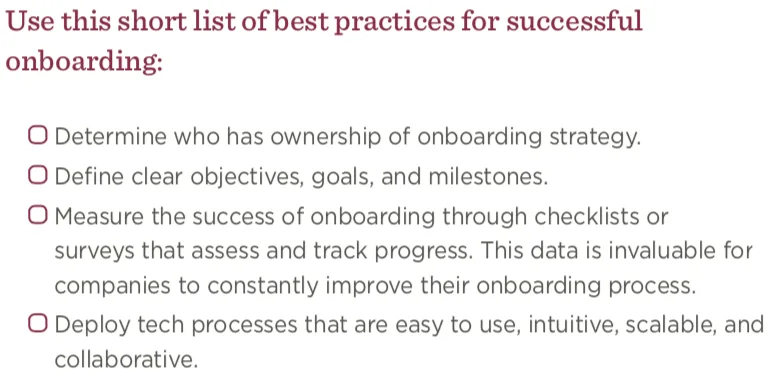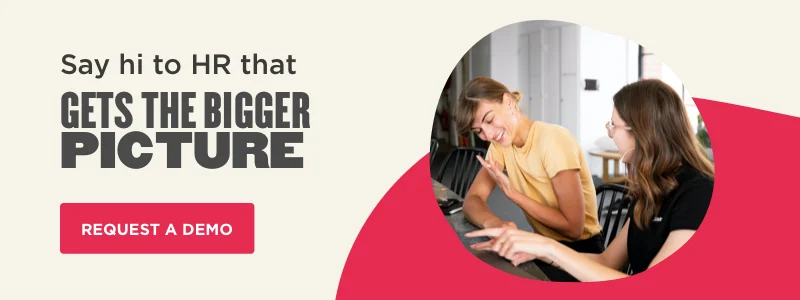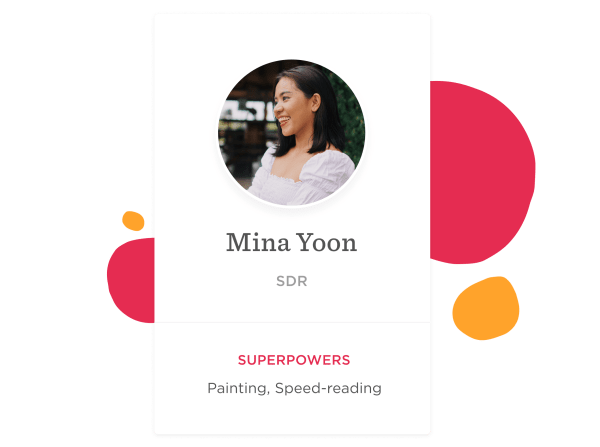Introduction
As HR leaders, we undoubtedly spend much of our time thinking about the best ways to onboard new people to our company. We aspire to create a welcoming process that gives new hires a positive first glimpse at our inner workings and reinforces their desire to take an active role in them. We distinguish our initial process from our competition, going the extra mile for the sake of a favorable first impression. We brainstorm ways to spark engagement and bolster productivity while setting our sites on long term retention.
Like every area of business, data-driven decisions are a more solid approach than intuition alone. Leading companies use data to understand their people, upon which HR strategies are implemented and processes are built. To design an effective onboarding process, business leaders need research data to grasp existing trends among certain demographics. Applying data enables companies to customize a process that best suits their goals. But how many companies have asked new hires to weigh in to help us improve our process?
Only 12% of employees think companies have done a great job with onboarding. That is why we at HiBob have enabled new recruits to weigh in on their onboarding preferences, unearthing attitudes about what makes them feel welcome and what turns them off from the start. Using such data to customize your company’s onboarding process is but one of the many facets of HiBob’s personalized, holistic, and data-driven approach to people management.
This is particularly critical as our new world of work is plagued by “the quitting economy,” with 40% of employees expected to quit their jobs this year. The majority of those throwing in the towel are Millennials, citing reasons for leaving that include compensation, work-life balance, and lack of growth. 60% of Millennials revealed they are open to a different job opportunity, and 55% express a lack of engagement in their workplace.
“Everyone I talk with tells me their onboarding process is complex and incomplete. One of the companies told me their service engineers suffer a 50% turnover rate in the first year. This is because there really is no strategic onboarding process, so managers are filling in the gap. Employee moves are a similar opportunity… Have you ever had a job where the first week was horrible? It sets a bad tone for a long time.”
As businesses bring consumer experiences into the workplace, employee experience is a top concern for HR leaders and the C-Suite alike. Leading HR industry analyst Josh Bersin points to onboarding as a means of improving productivity, wellbeing, and output, among other ways to improve the employee experience.
But onboarding as we know it is in need of a facelift, with employee engagement as the end game. HiBob’s research sheds light on what your people really want from an onboarding experience and factors that impact their perceptions favorably from the day they accept a job offer.
“One of the companies I met with (Coca Cola) found that ordering a new employee credit card required 52 different process steps. I’m sure all those steps were well-intended when they were designed, but it ended up wasting hours and hours of employees’ time.” Josh Bersin
Why bother with onboarding?
As your new hires assume their new roles and are introduced to your company’s inner workings, a system to help them integrate successfully should be in place. The process includes knowledge exchange, and addresses skills and behaviors that enable your new people to become effective organizational members and insiders. Research shows that new hires who undergo a structured orientation program were 69% more likely to remain at the company for up to three years.
While the concept of onboarding (previously referred to as organizational socialization) has been around for decades, it only became a mainstream HR process in the 1990s, with as many as 66% of organizations instituting some aspect(s) of formal onboarding programs and 53% investing in onboarding throughout a new employee’s first year. Of course, onboarding is as short as one day in some companies and up to one year, feeding into L&D initiatives, in others. No two companies will onboard in an identical way, as culture, geographies, and size shapes their strategy. Most will include training, checklists, community building, compliance, IT, and facilities, all with the common goal of providing newcomers with a feeling of belonging that has been proven to heighten engagement.
In today’s world of work, companies across the board view onboarding new employees as an opportunity to improve their competitive advantage by influencing a new hire’s integration and making a critical investment in retention, as companies incur steep costs to replace quitters.
What about ROI?
Countless studies present findings that reinforce the ROI of onboarding.
Organizations with a strong onboarding process improve new hire retention by 82% and productivity by over 70%.
Source: Brandon Hall Group, 2015
A 2012 study of impactful HR management functions by Boston Consulting Group highlighted that recruiting was related to a company’s ability to generate 3.5 times the profit growth and 2 times the profit margin. Following recruitment, onboarding was related to 2.5 times the profit growth and 1.9 times the profit margin. This certainly makes the case for dedicating efforts to these HR functions as collectively, companies with great recruiting and onboarding programs may enjoy six times better growth in profits and 3.9 times the profit margin than those who employ a haphazard approach.
Companies with a formal engagement strategy in place are 67% more likely to improve their revenue per full- time equivalent on a year-over-year basis.
The Aberdeen Group’s research showed that structured
onboarding results in higher productivity faster (65%), higher
employee engagement and inclusiveness amongst team members
(69%), higher retention (50%), and better immersiveness of new
hires in their teams (49%).
Onboarding as we know it is set up to fail
Sadly, many gaps still exist when it comes to successful onboarding. Employees often feel misled by job descriptions, which can make for a poor fit. Only 40% of employees say that their current job completely reflects how the position was described during the interview process.
As companies compete to attract top talent, they are sometimes guilty of underplaying some responsibilities or exaggerating others. This can lead to a problematic realization post-hiring. More than 25% of employees say that they didn’t receive enough information about their job before accepting the offer.
“You can automate many things but you can’t replace human connection without true and engaging conversation.
To create a powerful hiring journey, you need to design the experience in a way that will engage your target candidates and provide clear expectations, being as transparent as possible.”Ronni Zehavi, People Matters
In extreme cases, new recruits may sense the job description they were hired for was inaccurate or dishonest — a sure way to compromise trust between employers and new hires. HR Managers must take this to heart when publishing new job opportunities.
What your people really want from onboarding
58% of all companies indicate that the biggest influence on onboarding efforts is the need to engage new hires in the company culture.
We’re all familiar with the phrase “culture eats strategy for breakfast.” When designing the ultimate process to usher in new hires, warmth and friendliness goes a long way. Of those new hires surveyed, more than 33% dread adapting to office politics and personalities over learning protocol or filing onboarding paperwork.
While some HR execs view onboarding as “everyone’s job,” assigning peer mentors as a “safe haven” for new hires to ask questions, you may be surprised to learn that most prefer an organic onboarding approach. About half (49%) of employees surveyed believe the best way to get acclimated to a new job is by making friends in the workplace, opting to befriend coworkers independently over having a designated new-hire buddy.
“From our survey, we’ve learned that new hires want transparency and value the human side of the onboarding process, where they can be set up for success while organically making friends.”
Ronni Zehavi, Recruiting Daily Advisor
There’s hope: How to improve the process
How can leaders ensure the invested onboarding process they’ve created meets or exceeds the expectations of new hires? Companies of all shapes and sizes rack their brains to make their employee onboarding distinctive. Some great tactics include online meet and greets prior to the new hire’s first day on the job, packages of swag at their desk, memorable first day experiences such as a restaurant lunch or happy hour cocktails, and a head start vacay starting mid-week rather than first thing on Monday morning.
Get creative within cultural confines
Tailoring onboarding to your company culture will differentiate your process from any new hire’s “first-week-on-the-job” checklist. In a quest to outdo competitors, employers will sometimes get creative, as in the case of Zappos. This online shoe retailer is known for being fanatically service-oriented, and its high standards are applied as much to its people as its customers. The unique onboarding twist that originated at Zappos entitles those who wish to quit after one week of training to a $2000 bonus for leaving.
Anyone who accepts this offer lacks the kind of commitment that
the company expects from its employees. This out of the box tactic
means Zappos is staffing its company with the right people. Amazon
is another internet giant that adopted this approach of incentivizing
departure for those who do not fit the company or its culture.
Meet new hire preferences
When asked what would make you feel most welcomed at a new job, a majority of surveyed employees (38%) report they feel most welcome during onboarding when included in a group of other new hires. Additionally, new hires prefer intro meetings and interactive onboarding groups (31%) more than happy hours with colleagues. Seems interactive onboarding particularly appeals to those newcomers who are reluctant to stand out as the new kid on the block. Luckily for them, interactive onboarding is on the rise, as HR leaders opt for blended onboarding experiences that combine tech and human interaction.
As remote employees, flextime, and the gig economy become the new norm, interactive HR software solutions create a personalized and consistent experience that offers flexibility to onboardees, often using video, gaming, or simulations to keep things interesting.
Workplaces apply interactive onboarding by communicating with the new hire from the moment the job offer is formally accepted. This ranges from a welcome email to one that introduces a new recruit to a company portal, giving a pre-boarding opportunity for them to engage before day one on the job. As an example, LinkedIn employees are sent an Onboarding Roadmap with a weekly guide for their 90-day onboarding program.
Automating tasks such as capturing personal data, task
management, and integration with HR systems will improve
efficiency, while personalizing the experience to heighten
engagement. Other benefits of HR software platforms are intuitive
reporting and simple tracking features.
Paying attention increases retention!
Consider valuable data on new hire preferences when creating an onboarding process. With over half (52%) of employees spending up to five hours being onboarded at their new job, you want to make every minute count towards building a positive and long standing relationship with your new hire. “Your new hires’ first few weeks on the job could set the stage for a thriving long-term employment relationship, or a quick exit that hurts your business. Focus on improving your onboarding process so that you’re able to lock the former.”
Incorporating employee feedback into the onboarding process will make the shift from yesterday’s mind numbing experience of form filling and mundane recruitment tasks to a memorable and rewarding one. An experience that reinforces the positive attributes which made your new hire select your company as their new home. Look out for additional research reports on important HR topics.
Ready to take action?

Bob gets new joiners oriented seamlessly using features that reduce
your admin time, provide customized workflows, and encourage social
integration.
Methodology
A national survey was conducted online by Pollfish on behalf of HiBob on May 16, 2019. It includes responses from 1,000 employees ages 18+ in the United States.
60% female and 40% male
10.4% aged 18-24
28.7% aged 25-34
28% aged 35-44
19.5% aged 45-54
13.4% over 54 years
Meet Bob
We know how important it is to make holistic, data-driven decisions about your people, especially in light of today’s modern workplace changes. That’s why we built Bob, an employee experience platform that develops great people leaders and keeps them up to speed with the current HR space and the latest tech, while boosting the admin process, talent management, and culture.
The main functions Bob uses to evolve and inspire its people leaders can be found in the Onboarding and Workflows features, with Integrations that empower and inform HR professionals.
Bob lengthens employee lifecycles
Digital admin
Automate and streamline HR paperwork processes.
- bob’s dashboard gives you an overview of company insights
- Org chart shows you connections between people and teams.
- Docs are organized in the system and secured in the cloud.
Recommended For Further Reading
Onboarding
Make a good impression on new hires beyond day one.
- Introduce new hires via Shoutouts to inspire inclusive culture.
- bob’s automated tasks function deals with the data.
- New hires can get to know co- workers with hobbies and clubs.
Workflows
Set and organize tasks for new hires getting into the groove.
- Custom Flows triggers actions at the end of an approval chain.
- Create custom templates for onboarding with Bob’s To-Dos.
- Track progress in real-time and make faster decisions.

